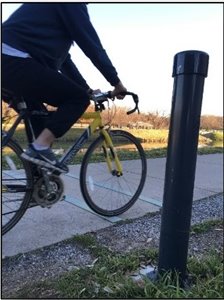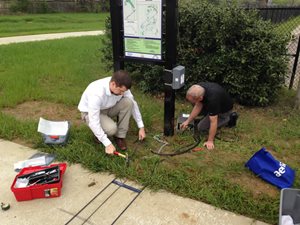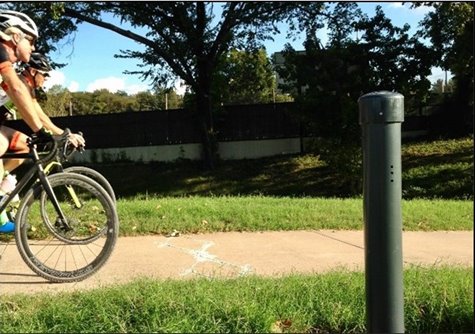Pedestrian & Bicycle Traffic Count Program
 NCTCOG collects data on pedestrian and bicycle facility usage throughout the region to support effective pedestrian and bicycle planning. Data related to actual non-motorized travel volumes helps:
NCTCOG collects data on pedestrian and bicycle facility usage throughout the region to support effective pedestrian and bicycle planning. Data related to actual non-motorized travel volumes helps:
- Inform the public and decision makers about actual usage and travel patterns
- Analyze trends
- Evaluate the impacts of specific projects (before and after) with mobile counts
COVID-19 Impacts on Active Transportation
Since the outset of the coronavirus pandemic in March 2020, impacts on bicycling and walking travel have been monitored in the North Central Texas region. Based on data collected from existing count equipment installed on trails, there has been a significant increase in walking and bicycling on trails in the region during 2020 compared to 2019. For additional information, please view the COVID-19 Impacts on Active Transportation presentation given at the November 18, 2020 Bicycle and Pedestrian Advisory Committee meeting. Additional data measuring the impact of the COVID-19 pandemic on other modes of transportation is available on NCTCOG's Changing Mobility web page.
Pedestrian and Bicycle Traffic Count Data Patterns and Trends
There are currently 36 count stations installed on trails across the Dallas-Fort Worth region, spread across seven cities in four counties. NCTCOG actively monitors data collected at 29 of these locations and includes this data in reports for transportation planning purposes, while the remainder of the count locations are located in parks and considered primarily recreational-oriented trips.
Pedestrian and bicycle traffic count data is available at the following sources:
NCTCOG has mobile equipment available for loan to local jurisdictions to conduct short-term counts of pedestrians and bicyclists on shared-use paths or along streets. To express interest and coordinate borrowing NCTCOG's mobile counting equipment please contact Daniel Snyder.
- A loan agreement will be executed between the agency borrowing the equipment and NCTCOG.

- Two shared use path (trails) units and two on-street units are available for loan. An agency may borrow any or all counters.
- The equipment is recommended to be installed and collect data for a minimum of two weeks per location. The length of time an agency may borrow the equipment is based on the number of locations where data will be collected.
- Count equipment must be installed by local agency staff. Installation guides and diagrams will be provided.
- To learn more about conducting short-term counts, please review NCTCOG's Mobile Counter Site Selection Best Practices Guide.
- For additional information on how mobile counters are loaned out, please see the Loan Program Overview.
- To address performance measures in active transportation
- To obtain new baseline data for purposes of updating Air Quality calculations used for measuring benefits of bicycle and pedestrian facilities
- To provide the Regional Transportation Council (RTC), other elected officials, and local jurisdictions with more informed data related to non-motorized travel volumes and routes in the region
- To establish regional count/data collection procedures and practices for consistent application by local jurisdictions/count programs throughout the region
- To serve as the regional clearinghouse for multi-modal count data
- To support local jurisdictions in establishing and maintaining local count programs
- To establish a baseline of continuous count data in targeted regionally significant locations/corridors that are supplemented by local count programs
- To identify non-motorized commuting patterns
- To initiate non-motorized travel data collection that could be integrated with regional travel models in the future

Staff contact: Daniel Snyder